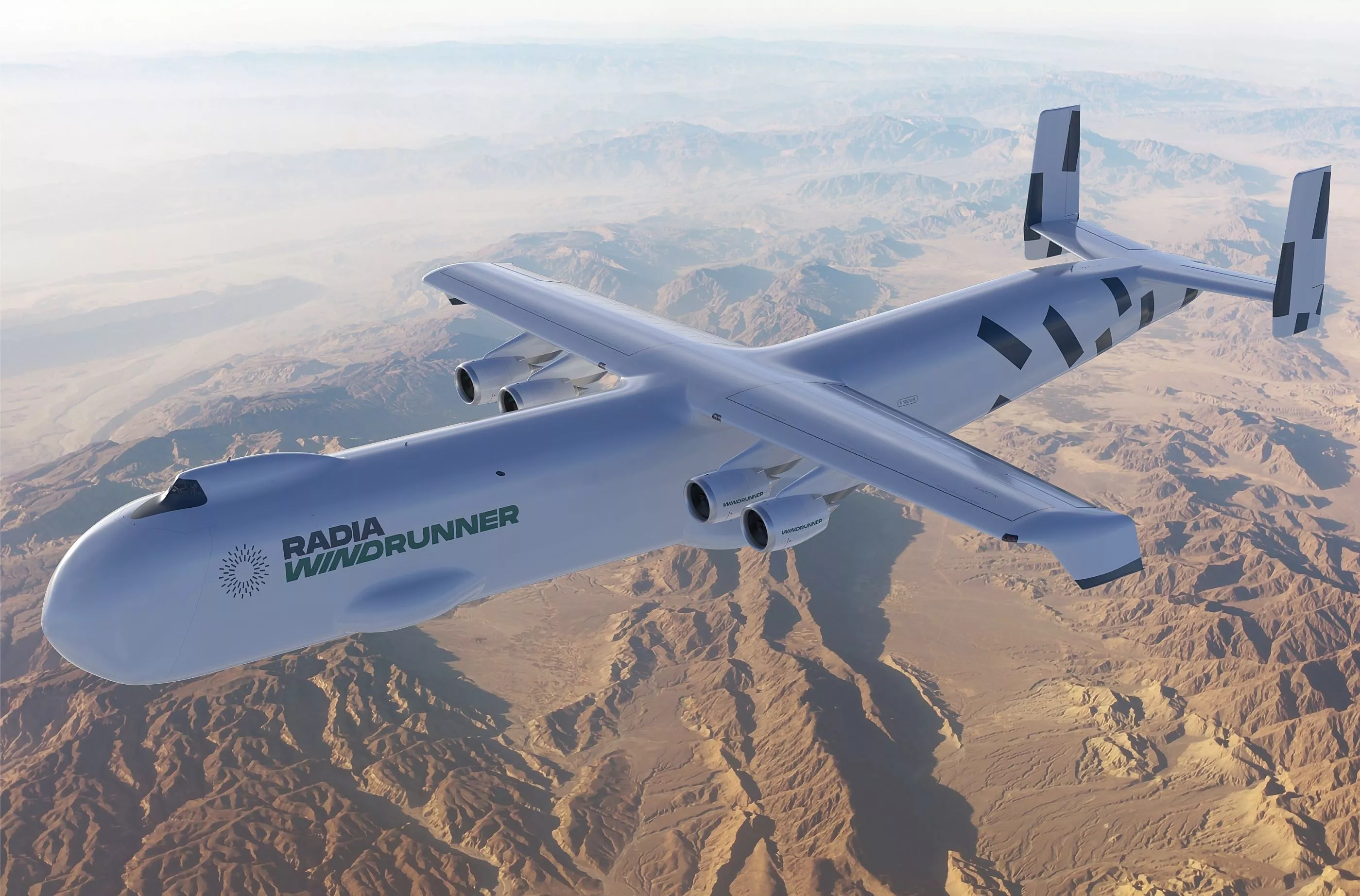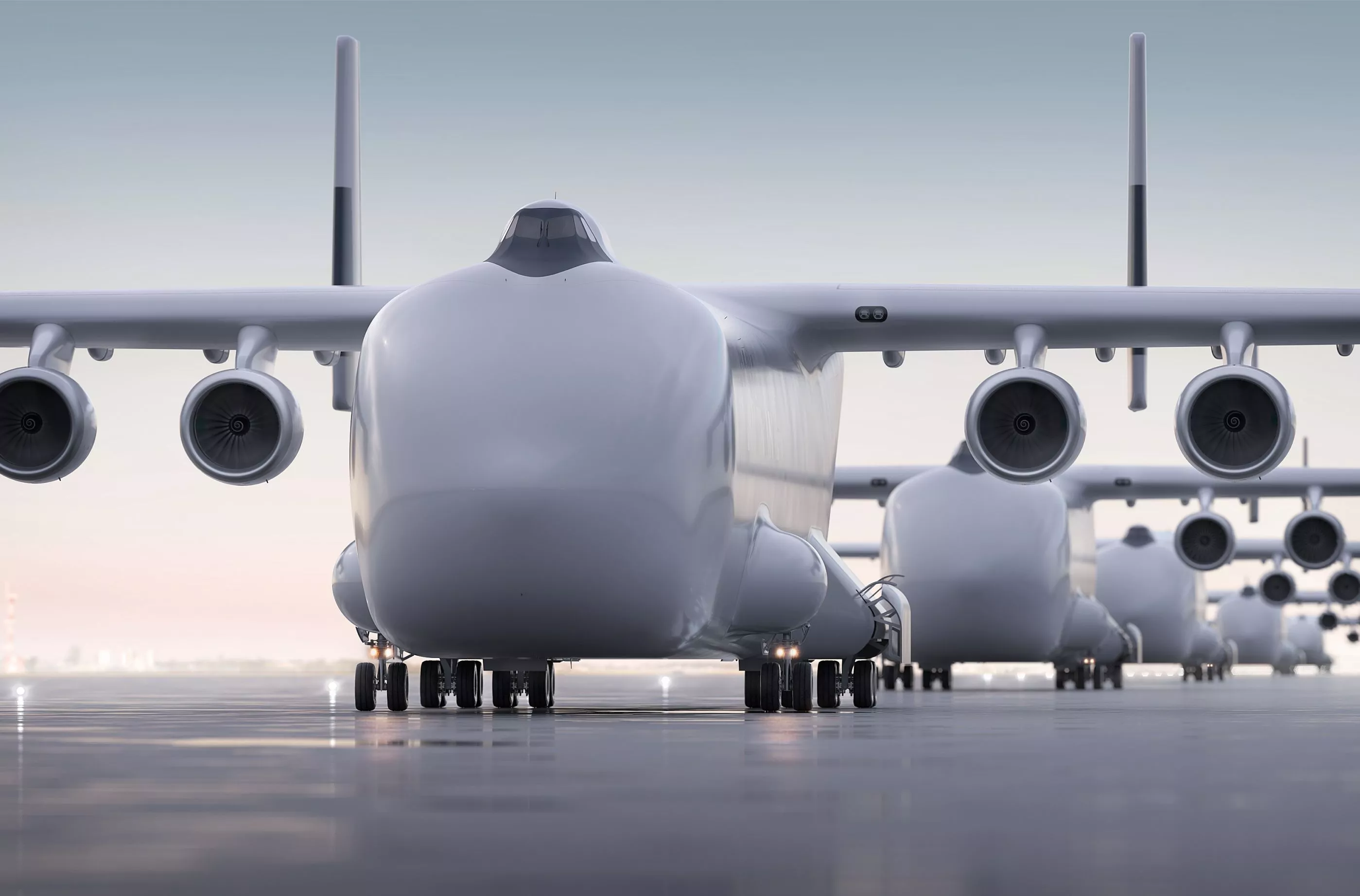The 108-m (356-ft) long Radia Windrunner is designed to transport cargo too big for the road, to short, semi-prepared airstrips on rough terrain. It would dwarf the majestic 84-m (275-ft) long Antonov An-225 Mriya, which is sadly no longer with us.
With the notable exception of the Large Hadron Collider, there's really no machine in history with single parts larger than today's mammoth wind turbines. Some offshore turbines, for example, are being built with blades more than 140 m (459 ft) long. One of the reasons why they're not getting to this scale on dry land is that it's damn near impossible to move blades this size on the road.
Corners are too tight. Bridges are too low. Even blades half that size are a logistical nightmare – and sometimes the process is pretty terrifying to watch, as you can see in the video below. Wouldn't want a big gust that day!
But size really matters in wind power, where the swept area of your turbine is the key factor in how much energy you can harvest. The tips of the blades sweep a larger area than the sections closest to the hub, so there's a disproportionate area gain to be made for every bit of length you add. If onshore wind could start using blades nearly the size of what's being used offshore, more wind energy could be harvested at lower cost.
Thus, the idea of the Radia Windrunner – a transport solution you could design an entire turbine manufacturing operation around, and indeed one that wind farms would need to factor into their plans from day dot, because it's totally focused on moving absolutely colossal turbine blades.
If it was six feet longer, the Windrunner would stretch the entire length of an NFL football field, and with its 80 m (261 ft) wingspan, it's nearly three-quarters the width, too. At 24 m (79 ft) high, it's no taller than an Airbus A380 – but its flip-top front, with the cabin elevated right up at the top of the fuselage, allows the 108 m (354 ft) long plane to carry cargo up to 105 m (344 ft) in length, and 7.3 m (24 ft) in diameter.
Maximum payload weight is a whopping 72,575 kg (160,000 lb), maximum range is around the 2,000-km (1,200-mile) mark, and the volume of the cargo bay is some 8,200 cubic m (272,000 cubic ft) – seven times more than the mighty Antonov could offer. It'll be rather big.

The idea is that you'd put an airstrip as close to your blade manufacturing facility as possible, and another right there at the location of the wind farm. You'd load a blade straight into the plane from the factory floor, and likewise you'd crane it up for installation pretty much straight out of the back of the plane.
In order to facilitate this kind of behavior, the Windrunner is designed to take off and land on a relatively short 1,800 m (6,000 ft) airstrip. To put that into perspective, your typical, much smaller passenger airliner typically uses a strip between 30-110% longer than that.
What's more, Radia doesn't even expect a proper paved airstrip. Presuming that a lot of wind farms will be built in open, flat country, it's designed the Windrunner to operate on "semi-prepared airstrips" – that is to say, simply an area that's been cleared of rocks, bushes, trees and other obstructions, like what a military aircraft might land on during an operation.

According to the Wall Street Journal, the Windrunner is a lot more than a set of renders, too – Radia has apparently raised US$104 million to the cause, and the company estimates that the bigger turbines it unlocks for onshore wind developers could reduce their cost of clean energy by as much as 35%, and make wind farms viable in a much wider range of locations. The company apparently believes it'll have the Windrunner built, tested and certified within around four years.
Certainly a remarkable project, and possibly one that could crack open all kinds of opportunities for clean energy developers once it's airborne. We look forward to following progress on this monster machine!
Source: Radia












